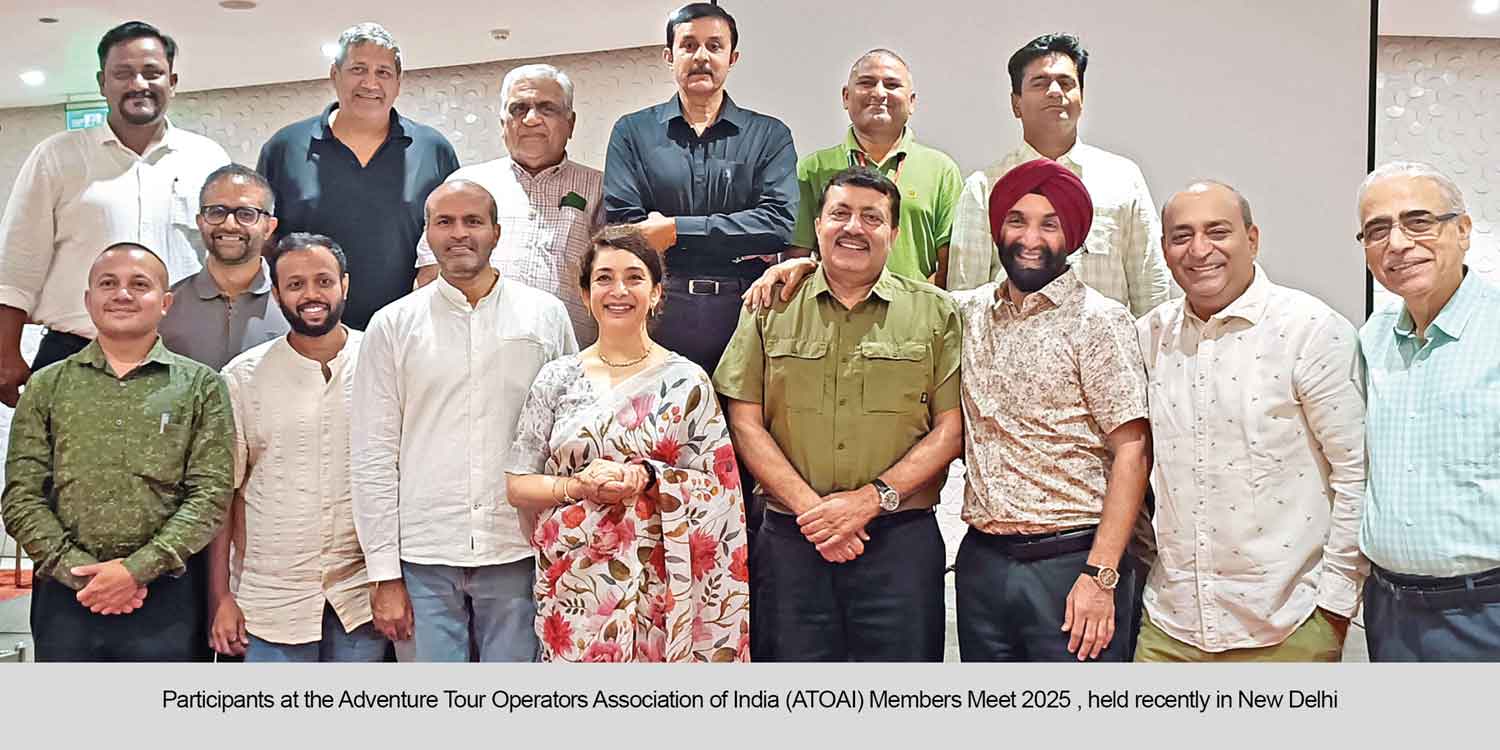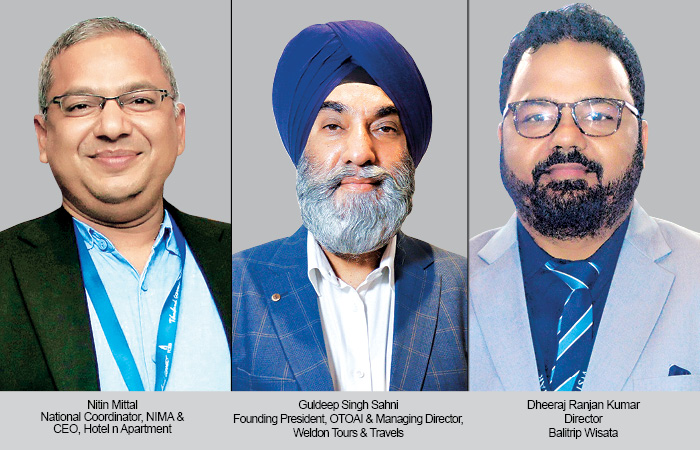A massive untapped tourism potential exists in India, and it is vital to utilise it to the fullest extent without harming the environment. The focus of the government and travel partners is on making and promoting policies centred on adventure tourism, so that the country becomes the number one destination for adventure tourism.
Janice Alyosius
India is home to numerous states that offer adventure tourism to travellers. Moreover, the diversity and abundance of wildlife in India has always piqued nature lovers’ interests. The Himalayas, the coast and the vast deserts of India make it one of the best adventure and wildlife tourism regions in the world. The Government of India is emphasising on promoting various Indian destinations that offer exciting adventures and wildlife encounters.
The Government of India is working towards protecting and promoting adventure travel in India.
Speaking about the government policies at the India Pavilion at Expo2020 Dubai, G Kamala Vardhana Rao, Director General, Tourism, said, “In terms of the policies, it is very important for every government to protect its own environment and to protect its own wildlife, and we are doing that with all our actions. As far as coastal and wildlife protection is concerned, we have a
law in place.”
He spoke of India’s 551 wildlife sanctuaries and 104 national parks, and expressed concern about the potential they hold that is not well-publicized to international tourists. The natural heritage and the beauty that Indian adventure and wildlife destinations hold can easily compete with what international destinations have to offer. The government is assisting and supporting efforts to promote India both domestically and internationally.
He also spoke of the outreach programme in which the government visited Leh, Ladakh, and the Northeast and found that medical facilities were of the greatest concern. According to him, medical facilities are the only aspect that is viewed as a major challenge. The state governments and the central government are working together to address and resolve other issues raised by the stakeholders and to promote tourism flawlessly.
The youth have been actively involved in adventure activities. The same has been witnessed in Kashmir. Rao revealed that the younger generation of trekkers, through the formation of their adventure clubs, have come together to promote skiing in Kashmir. “We have a skiing institute established by the Ministry of Tourism in Gulmarg. The Alps, which used to be a famous skiing spot, have been swamped with tourists, which is why Gulmarg is now regarded as an alternative skiing destination after the Alps. We have more than 200 to 300 good slopes which are identified by the skiing institutes in Gulmarg”.
Rao stressed the need for building proper infrastructure facilities. Indian infrastructure facilities are currently under scrutiny due to the kind of international infrastructure that exists in the Alps. India’s infrastructure facilities are overshadowed by those found internationally, which is a cause for concern at present since the sort of infrastructure found in the Alps and other parts of the world should be made available in Gulmarg to promote tourism.
He expressed his enthusiasm and said, “If all goes well, we would like to host skiing competitions and international tournaments in the coming year or next year.” Rao seemed confident that India would emerge as a major adventure destination as it offers a variety of adventure activities with safety guidelines. The state government is taking the input of stakeholders into account and will formulate policies to strengthen and promote adventure and wildlife tourism in India.
The majority of travellers want to enjoy the natural environment and indulge in adventure touristic activities like skiing, trekking, skydiving, hill climbing, scuba diving etc. Though adventure tourism is exciting, it comes with certain risks and dangers as well.
Vaibhav Kala, Vice President, ATOAI, said, “With adventure tourism expected to be a US$1.6 trillion industry by 2026, global travelers are seeking more adventurous and fun outdoor experiences. According to the 2018 travel trends report, travelers are predominantly looking for things like relaxing in nature, experiencing thrills in a beautiful setting, and traveling sustainably. India has incredible potential to offer all of these and more.” He further revealed that as per the World Economic forum’s travel and tourism competitiveness rankings India is among the top ten in the world for natural heritage. “Our nation is the first to submit a progress report on a bond challenge pledge to restore 21 million hectares of forests by 2030, out of which 9.8 million hectares have already been restored. We are ranked sixth in the world for our natural resources,” he said. “In order to achieve this, we are striving to offer products that follow good practices, while keeping in mind the lessons learned from the first and second wave of stopovers. It’s our belief that this is the only way to keep operations alive and sustainable. We are seeing a revival in travel trends that have been almost as high as they were pre-pandemic,” he added.
Ajeet Bajaj, Executive Committee member, ATOAI, discussed the three Gs for risk management in adventure tourism, which are guidelines, guides, and gear. The Indian Ministry of Tourism has adopted the Indian adventure tourism guidelines of the Adventure Tour Operators Association of India (ATOAI) in 2018. 31 different adventure sports are covered under the guidelines, which are being implemented across the country. He revealed that the guides in adventure travel have been trained in not just technical skills but also related skills such as first aid and CPR, communication skills, FNB, guest handling, soft skills, and most importantly, search and rescue. “In terms of equipment, we use gear at international standards in India, and I think we have world-class adventure outfitters ready to offer an adventure experience of a lifetime in the incredible Indian outdoors,” said Bajaj.
Speaking of the diversity that India has to offer, Akansha Garg, Committee member, ATOAI Women’s Collective, said, “As a whole, India is very unique in terms of culture, season, and terrain, including the Himalayan mountains, the Kanyakumari Sea coast, the thar desert of Rajasthan, and the humid forests of the Northeast. We have a rich cultural and natural heritage, and we are one of the world’s megabiodiverse countries.”
Talking about stays, Garg said, “In India we offer accommodation of all sorts. We are even encouraging homestays to be set up in the wildlife sanctuaries so that travellers can see how the local people live. In national parks, there are a lot of resorts, but what’s really unique about them is that they flood the locals. We can see that as the local community benefits from tourism, they become forest preservationists and protectors.”
 TravTalk India Online Magazine
TravTalk India Online Magazine








